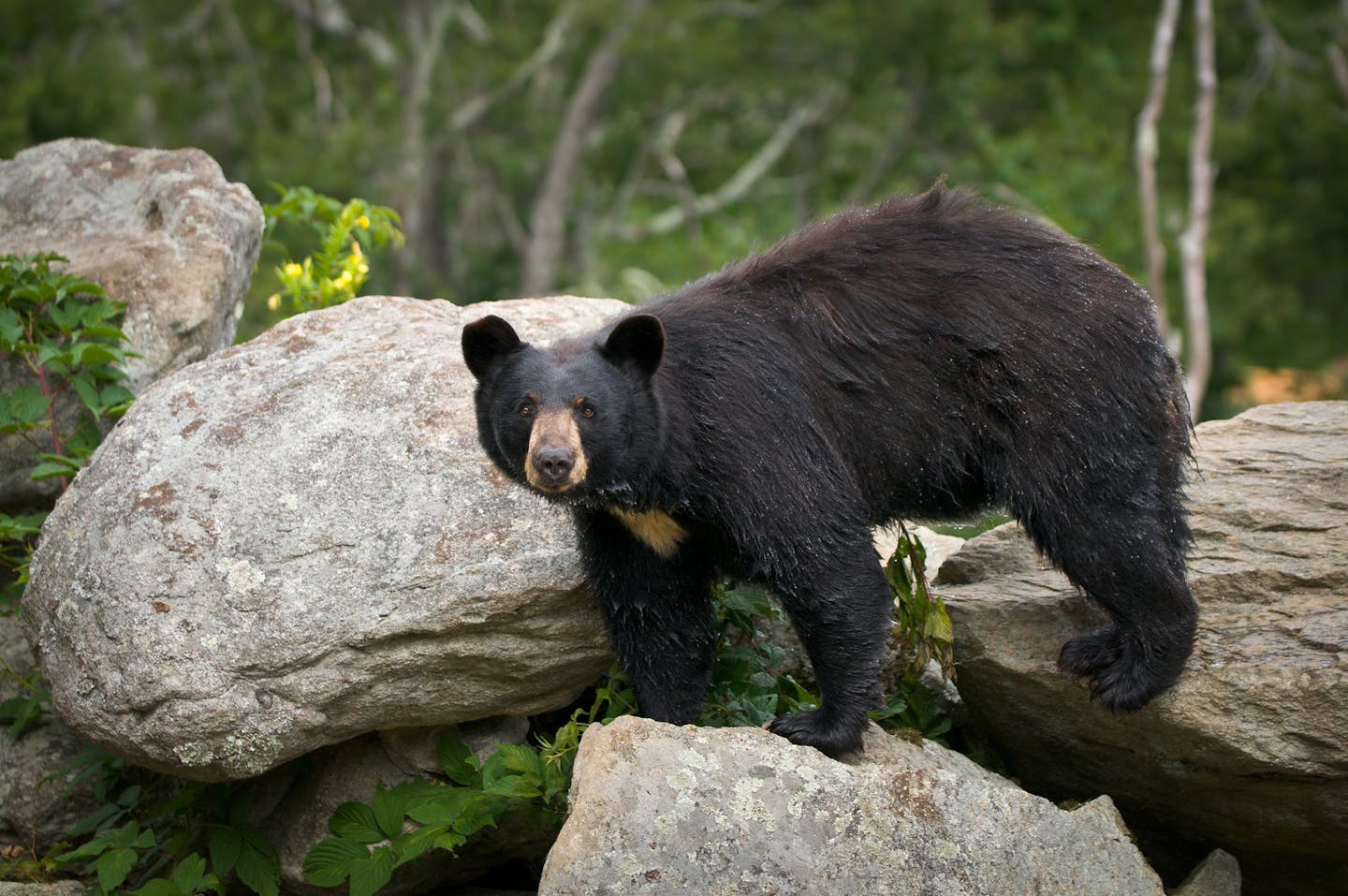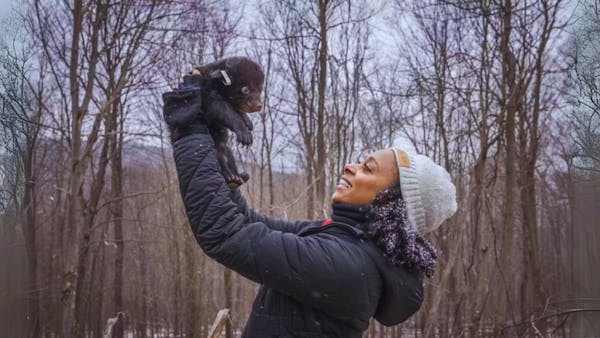The American black bear: From sacred stories to suburban shadows
- Nature Conservation
- Land Conservation
- Mammal Assemblages
- Iconic Species
- Wildlife
- Mammals
- American West
- Northern America Realm
One Earth’s “Species of the Week” series highlights an iconic species that represents the unique biogeography of each of the 185 bioregions of the Earth.
Few animals embody the quiet resilience of North America’s wild landscapes like the American black bear. Elusive yet adaptable, it has learned to thrive in a changing world, holding onto ancient instincts while navigating the edges of modern life.

American black bears are the iconic species of the Columbia Plateau & Blue Mountains bioregion (NA17), located in the American West subrealm of Northern America.
A life rooted in forests and mountains
The American black bear (Ursus americanus) is North America’s most widespread bear species, thriving in forests that stretch from Alaska to Florida, from remote Canadian woodlands to the edges of suburban neighborhoods. These agile animals prefer rugged terrain, dense understory, and access to seasonally abundant food.
They inhabit oak-hickory forests in the Appalachians, coastal swamps in the Southeast, and spruce-covered ridges in the Rockies. In the Pacific Northwest, they move through redwood groves and chaparral hillsides, sometimes venturing into open meadows to graze or forage on berries.
Physical traits and surprising strength
Despite their name, not all of these bears are black. Their coats range from deep chocolate and cinnamon to blonde, gray-blue, and even white in rare cases like the spirit bears of British Columbia.
Adults typically stand 60 to 90 centimeters (2 to 3 feet) at the shoulder and can weigh anywhere from 45 to over 225 kilograms (100 to over 500 pounds), depending on sex, location, and season. They are versatile climbers and strong swimmers, capable of outrunning a human and flipping boulders weighing over 136 kilograms (300 pounds). Their dexterous paws and sharp intelligence allow them to open containers, manipulate latches, and navigate complex environments.
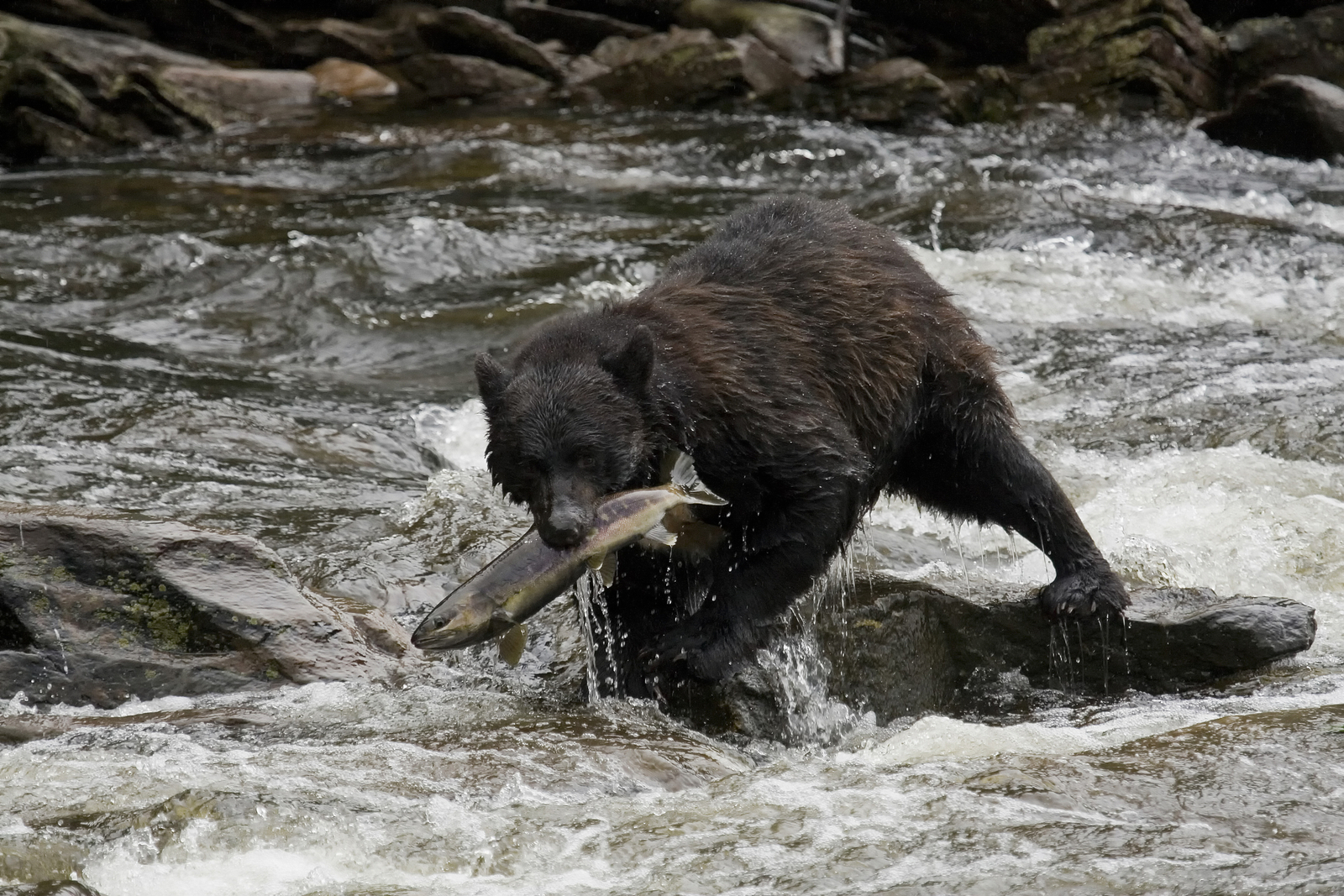
An American black bear catching fish in Alaska. Image credit: © Sorin Colac | Dreamstime
Foraging through the seasons
These omnivores consume a varied diet that shifts throughout the year. In spring, they feed on grasses, buds, and carrion. Summer brings berries, insects, and the occasional salmon for those near streams. In the fall, they enter a period of hyperphagia, devouring acorns, hazelnuts, and other calorie-rich foods to prepare for hibernation.
Although plant matter makes up the bulk of their diet, they also prey on fawns, moose calves, and smaller mammals when opportunities arise. In some areas, they supplement their diet with human food sources, leading to increased conflict in developed regions.
Architects of the wild
As seed dispersers, scavengers, and occasional predators, these bears play a crucial role in their ecosystems. Their movement and foraging patterns shape plant distribution, maintain healthy soil, and influence animal populations. Their presence helps keep ecosystems balanced and resilient, especially in forested landscapes.
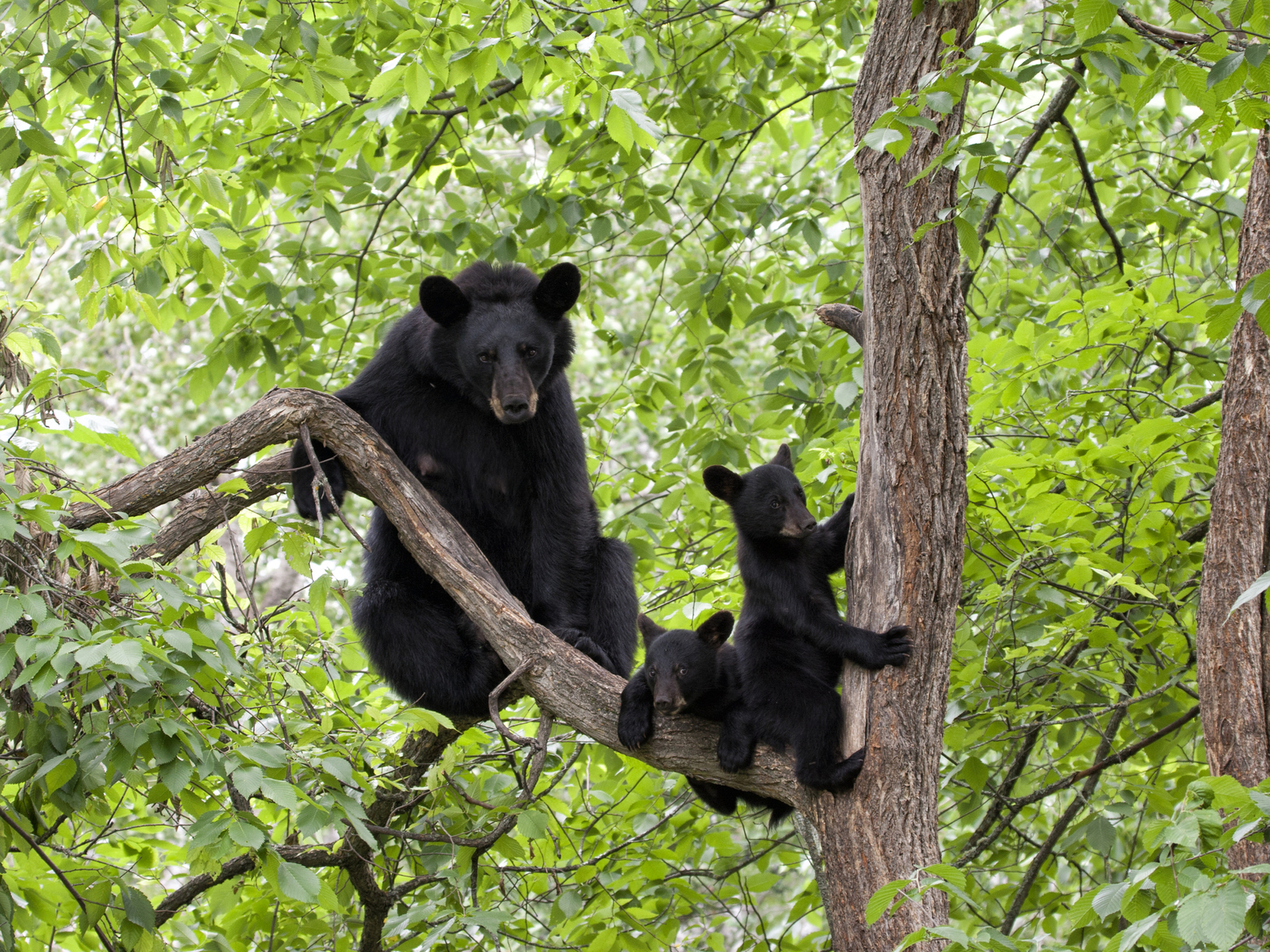
A mother black bear in a tree with her two cubs. Image credit: © Dssimages | Dreamstime
Behavior and daily rhythms
These bears are generally solitary and territorial, except during mating season or when abundant food brings individuals together. They are most active at dawn and dusk but can shift to nocturnal habits near human populations.
Cubs stay with their mothers for over a year, learning essential survival skills. Communication comes through vocalizations, scent marking, and tree-scratching. They can be both cautious and curious, exhibiting a high degree of adaptability in response to shifting environmental pressures.
From birth to independence
Females typically give birth to litters of two or three cubs in midwinter while hibernating. Cubs are born blind and helpless, nursing until spring and remaining with their mother for 16 to 18 months.
Mating occurs in early summer, though delayed implantation ensures cubs are only born if the mother has sufficient fat reserves. In the wild, individuals can live up to 23 years, though many succumb earlier due to human conflict, disease, or hunting.
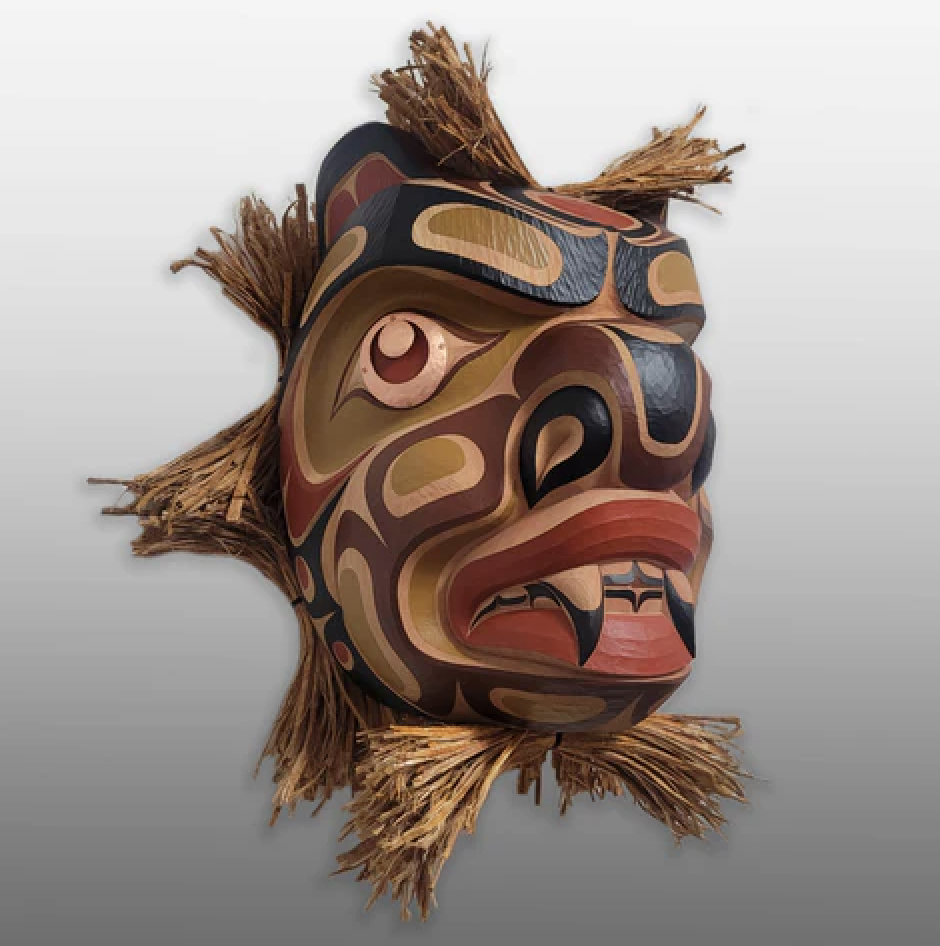
Black bear mask by Junior Henderson, Kwakwaka'wakw. Image credit: Spirits of the West Coast
Honored in story and spirit
To many Indigenous cultures, the black bear holds spiritual significance. In Navajo tradition, the Big Black Bear is a spiritual guardian and protector, often invoked for courage and safety. Pacific Northwest tribes tell of a woman who married the son of a bear chief, teaching respect and reciprocity between species.
For the Anishinaabe, the bear embodies bravery, one of the seven Grandfather Teachings, and is closely linked to healing traditions. The Sleeping Bear Dunes of Michigan are named for a mother bear who waited endlessly for her cubs lost at sea, her form memorialized in the dune itself. These stories remind us that the bear is not merely a wild animal, but a relative, deserving of reverence.
Navigating a fragmented world
Despite being listed as a species of Least Concern by the IUCN, this bear faces increasing threats. Habitat loss, vehicle collisions, and human-bear conflict are rising, especially as development expands into formerly wild areas. Climate change alters food availability and hibernation patterns.
In some places, such as Mexico, the species is considered endangered due to habitat fragmentation. Though populations in places like the Smoky Mountains and western North Carolina are growing, survival often depends on their ability to coexist with people.
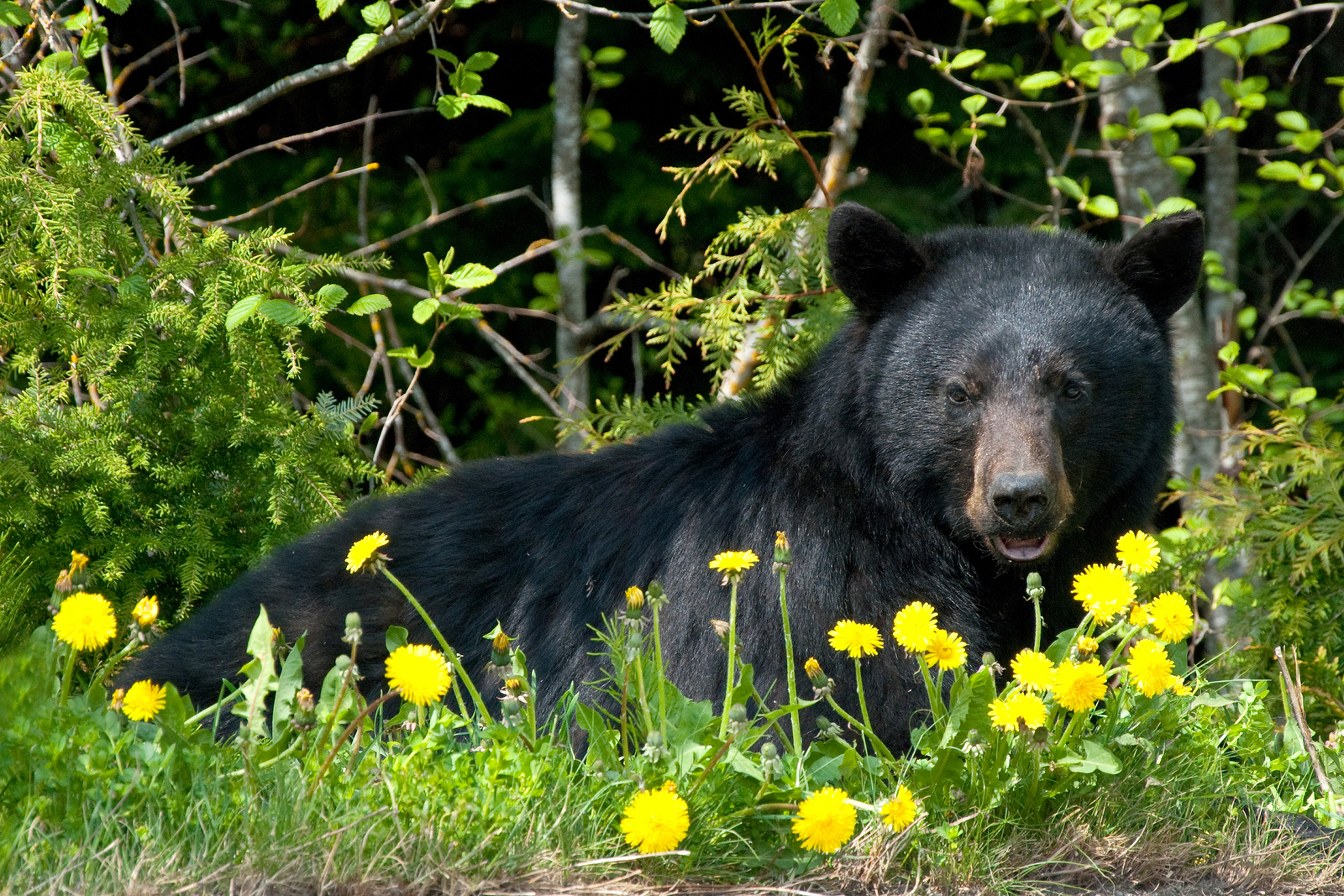
A black bear lounging in a bed of wildflowers in Whistler, British Columbia, Canada. Image credit: © Vacclav | Dreamstime
Rewilding large mammals to restore ecosystems
A 2024 study led by RESOLVE and funded by One Earth found that restoring just 20 large mammal species, including this one, could help revive ecosystem integrity across 8.5 million square kilometers globally. In North America, reintroducing the bear alongside bison, wolverines, and brown bears in 60 ecoregions could restore over 3.2 million square kilometers of land, strengthening biodiversity and ecosystem function.
Conserving a symbol of the Americans
Efforts to protect this iconic species include habitat preservation, public education, improved waste management, and wildlife corridors that allow for safe migration. States and provinces across North America manage hunting seasons and monitor populations, with increasing focus on minimizing human-wildlife conflict.
From ancient legends to modern conservation efforts, the American black bear remains a powerful symbol of wildness and resilience. Protecting its future means protecting the forests, waters, and shared spaces that sustain us all.
Support Nature Conservation